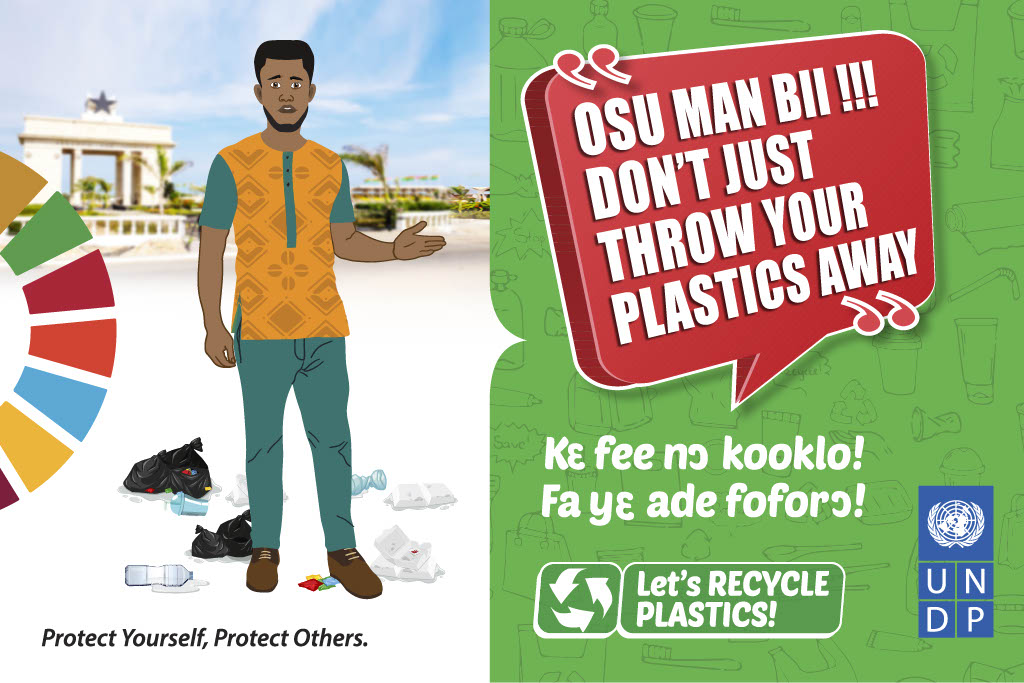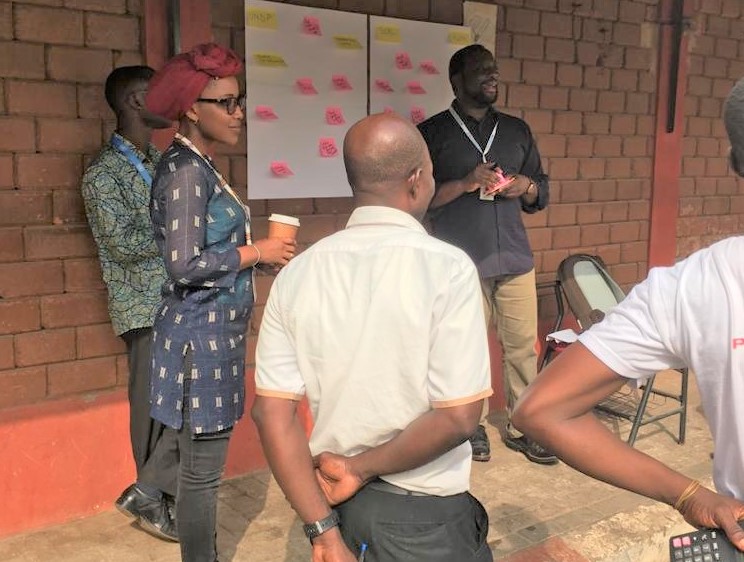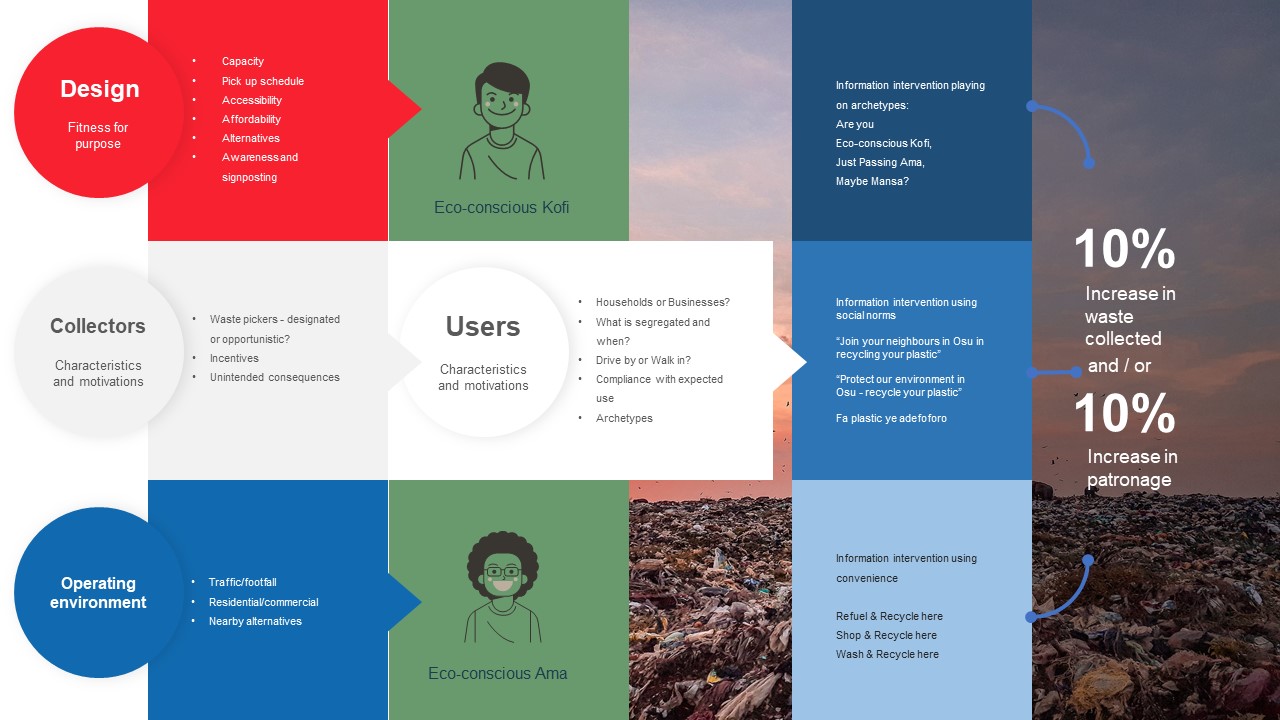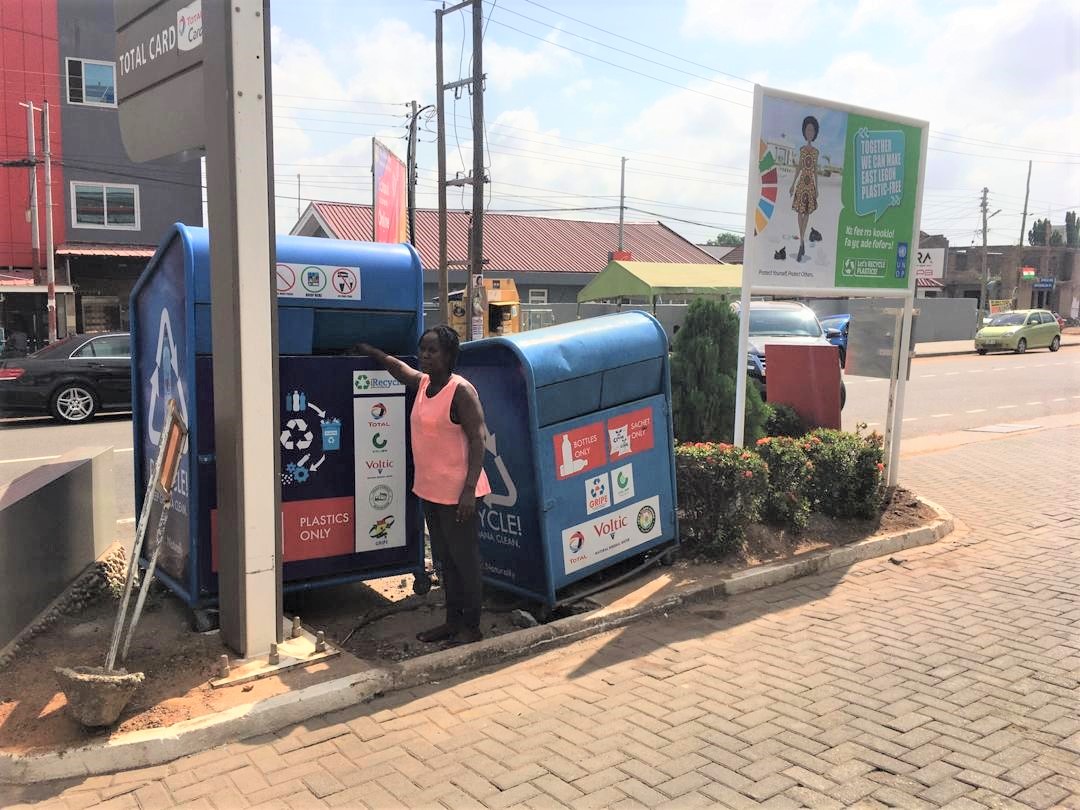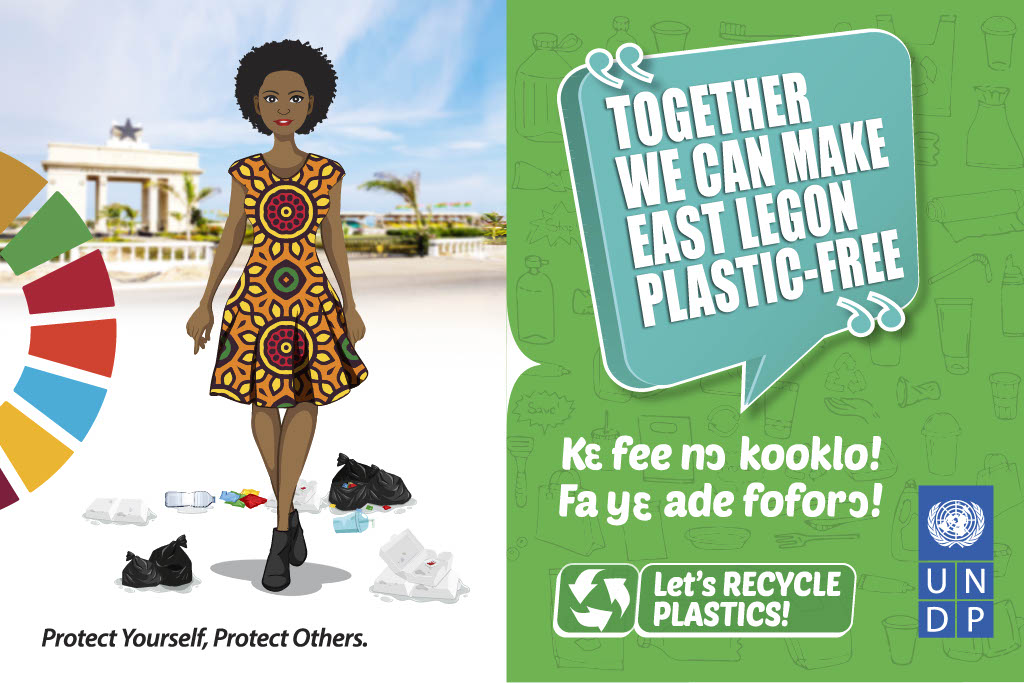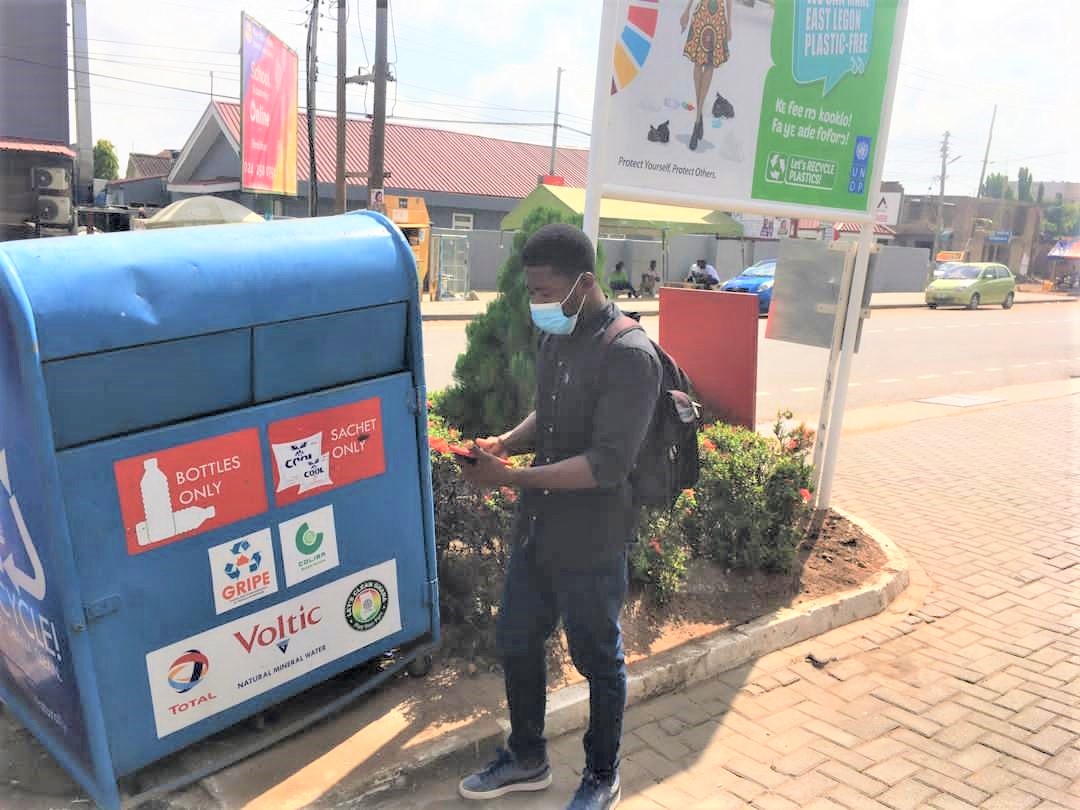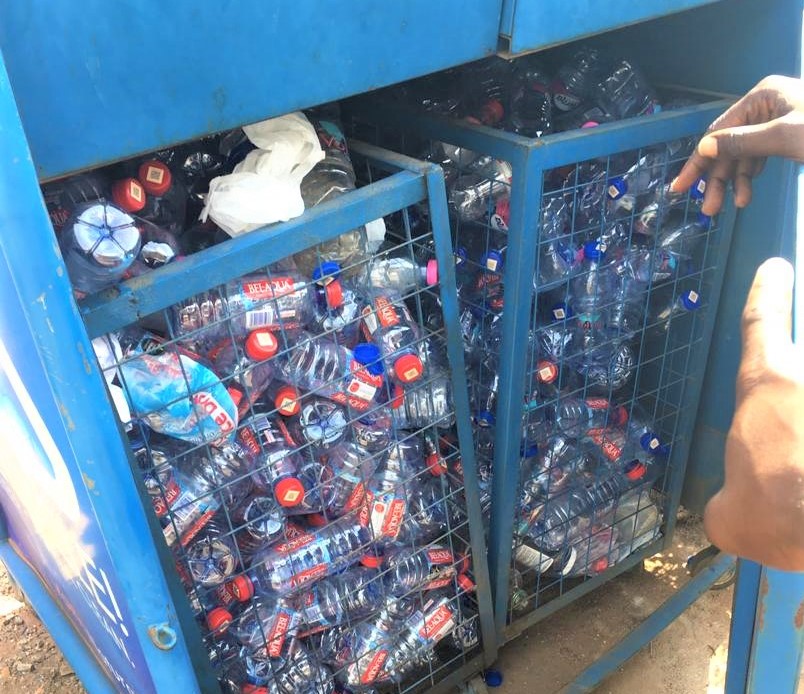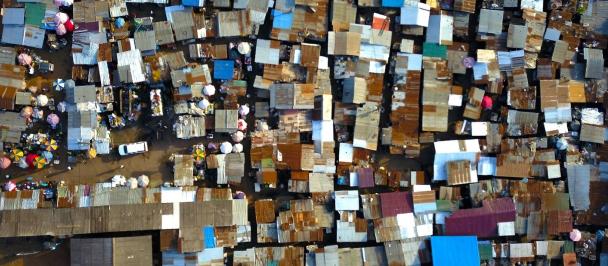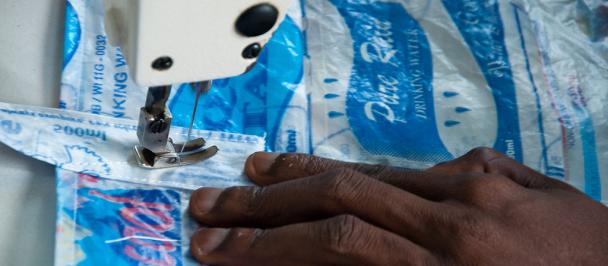Part 2 of an experiment to apply Behavioral Insights to plastics segregation in Ghana
By Allen Anie, UNDP Accelerator Lab Ghana
Eco-conscious Kofi Archetype. (Source: UNDP Ghana)
Part 1 of this blog outlined a Behavioural Insights (BI) experiment to encourage segregation and recycling of plastics, one example of how the UN system is deploying behavioral approaches to tackle development challenges. Recycling is a key part of Ghana’s approach to managing plastic waste, and there is significant growth potential, as just 5% of the 1.1 million tons of plastic waste Ghana generates annually is recycled.
This Part 2 reports on the results of the experiment, which was co-designed with GRIPE (Ghana Recycling Initiative for Private Enterprises) and Coliba Limited (a recycling start-up), to increase quantities of post-consumer plastic deposited in recycling bins.
Experiments took place at selected fuel service stations under an existing iRecycle project, where people can deposit PET (Polyethylene Terephthalate – most common thermoplastic resin used in containers for liquids and foods) plastic bottles in recycling bins. These stations are behavioral hotspots, where the primary activity, refueling, can be reframed, to include other decisions, such as whether to shop at an onsite convenience store, service the car, and deposit plastic. Typically, waste pickers collect plastic from the bins for sale to aggregators and recyclers. The plastic deposited is a no/low-cost input for waste-pickers, aggregators, and recyclers, supporting livelihoods along a value chain which links the informal and formal waste sectors.
While these arrangements worked well initially, the amounts of plastic deposited declined over time. At one station in Osu, bins that were previously full enough to be emptied twice a week, were being emptied twice a month. As use of the bins declined, waste-pickers reverted to picking plastic off the streets. Since segregation and recycling are learned behaviors, this was an opportunity to test if applying BI could increase use of the bins, by shifting social norms from ‘plastic waste is a national problem - for Government to solve’ to ‘plastic waste is also a local problem – which local people have a key role in solving’.
Context and Archetypes
The Accelerator Lab organized workshops with waste pickers, recycling start-ups, those who segregate, and those who do not. Segregators said that locating bins at the fuel stations enables them to combine segregation with buying fuel, making it easier to sustain their segregation habits, but they had concerns about bins not being emptied regularly and creating litter. Those who do not segregate highlighted the lack of awareness about where to take segregated plastic to, corroborating results of our online survey.
An inspiring group of female pensioners, who are also waste pickers, described how many of the youth had abandoned waste-picking because of declining incomes, but these pensioners saw waste-picking not only as a source of income (albeit low), but an important way to maintain physical and mental activity and a sense of purpose during their retirement.
Throwback (pre-Covid) pictures – workshops with waste-pickers and station staff
Workshops enabled co-creation of behavioral archetypes (personas) to describe typical motivations of segregators including the active (Eco-Conscious Ama and Kofi) and intermittent (Just-Passing Ama and Maybe Mansa), as well as those who do not segregate (No Chance Omar). Based on this, an information intervention was designed, to encourage segregation, targeting a 10% increase in plastics deposited.
Framework for information intervention
Small billboards were designed and mounted near bins at two stations East Legon and Osu.
Customer at East Legon bin. (Source UNDP)
Results
Over 3 months in late 2020 and early 2021, quantities of plastic deposited, and perceptions of existing and potential segregators, were studied. In total just over 1 tonne of plastic bottles was deposited at the 2 sites. At East Legon, almost 750kg was deposited, about 59kg weekly, and an average 18% increase above a pre-intervention baseline of 50kg weekly. At Osu, almost 300kg was deposited, about 23kg weekly, and an average 44% increase above a pre-intervention baseline of 16kg weekly. Bins were also monitored at two similar “control” locations, where amounts of plastic deposited did not vary much or showed some decline, over the experiment period. These are very positive outcomes, particularly as they were achieved without financial or other incentive systems, pointing to untapped potential for segregation and recycling among households and businesses, and opportunities for green entrepreneurs and investors.
At the experiment sites, bins were often full, and excess plastic was bagged separately. Over time, some segregators reported secondary behavioral effects, as their family and friends began to segregate their plastic.
What worked: Success factors include:
a) Co-creating and situating archetypes in local contexts: The archetypes helped people to see themselves in context, situating the plastics issue at an individual and community level, not only national or global.
The billboards combined English with Ghanaian languages Twi and Ga, using the phrases Fa Ye Adefofrↄ and Kɛ Fe Nↄ Kooklo, meaning “use something which exists for something new”. Local communities were mentioned directly including “Osu Man Bii [meaning people of Osu] – Don’t just throw your plastics away”).
b) Cognitive dissonance: We juxtaposed Ghana’s Independence Arch in the background and litter in the foreground, suggesting gaps between aspirations for clean communities and current realities. For some, this was a trigger to pay attention.
Reflections
While plastics deposited did increase following the intervention, segregation habits can lapse if bins are few and inaccessible. It is important to develop more networks of well signposted bins, particularly outside Accra, and decentralize capacity to process plastics, for example with mobile shredders. With rapid growth in post-consumer plastics, it is also necessary to develop uses for plastic-waste at scale, including sustainable construction.
Enabling Maybe Mansa to become Eco-Conscious Ama is great but enabling No-Chance Omar to become Just-Passing is also significant. Recognizing incremental behavioural change should be a key part of awareness raising, as idealized levels of eco-consciousness often portrayed in advocacy can appear unattainable.
The AccLab is bringing the behavioral approach and tools, including this animation, to schools and the grassroots, so they can take ownership of encouraging segregation.
This infographic triangulates the experiment with results of the AccLab’s “Let’s Recycle” survey and a Conversation on the Tro-Tro Diaries online community. (The TroTro diaries (on Facebook) is a large (420,000 plus membership) online transportation community in Ghana and West Africa, generating conversations about issues affecting communities).
Eco-conscious Ama Archetype. (Souce: UNDP Ghana)

 Locations
Locations